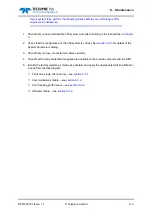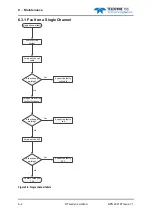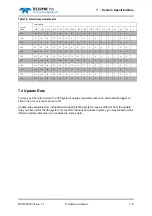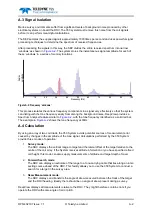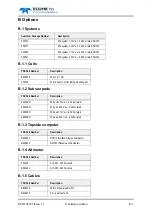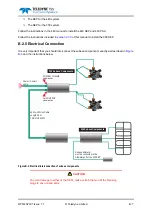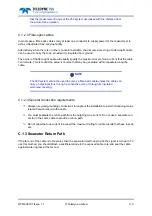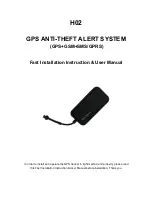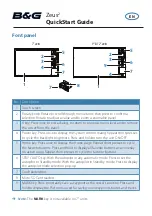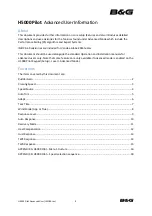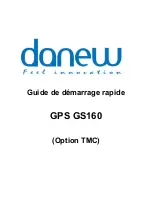
A-1
© Teledyne Limited
DPN 402197 Issue 7.1
A Operating Theory
The 350 system locates a target by:
1. Detecting the alternating magnetic fields associated with tone currents injected onto the cable.
2. Isolating the tone frequency from background noise.
3. Calculating the position of the target cable from the relative strengths of the signals on each
channel.
A.1 Electromagnetic Fields
The 350 system uses an array of sensing coils to detect the presence of alternating magnetic fields
and applies complex and powerful signal-processing techniques to locate the origin of these magnetic
fields.
Alternating magnetic fields exist around any conductor that carries an alternating current and are of a
strength that varies directly with the instantaneous magnitude of the current.
Figure A-1: Lines of magnetic flux
shows the situation when a conductor carries a current. In this example, the conductor
appears in cross-section with conventional current flow rising upwards out of the page. As the current
begins to flow, lines of magnetic flux expand concentrically from the centre of the conductor with their
polarity in an anti-clockwise direction as shown. The strength of the flux varies inversely with distance
from the conductor.
When the amplitude of current varies, the flux lines will expand or collapse simultaneously. The flux
lines will reverse polarity when the current changes direction.
A.2 Field Detection
Each sensing coil of the 350 system consists of a very large number of turns of fine copper wire wound
around a ferrous metal core. The continuously changing magnetic fields that exist around a tone-
carrying conductor act upon the sensing coils and induce in them an alternating voltage
v.
This voltage
varies in magnitude according to the following relationships:
Where
d
= distance from the conductor to the sensing coil
f
= frequency of current in the conductor
i
= magnitude of current in the conductor
v
1
d
---
v
f
v
i


